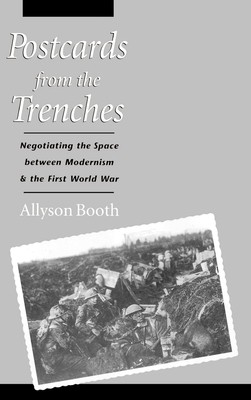
- We will send in 10–14 business days.
- Author: Allyson Booth
- Publisher: Oxford University Press, USA
- ISBN-10: 0195102118
- ISBN-13: 9780195102116
- Format: 16.2 x 23.3 x 1.9 cm, kieti viršeliai
- Language: English
- SAVE -10% with code: EXTRA
Reviews
Description
The unprecedented magnitude of death during World War I forever altered how people perceived their world and how they represented those perceptions. In Postcards from the Trenches, Allyson Booth traces the complex relationship between British Great War culture and modernist writings. She shows that, through the experience of the Great War, both civilian and combatant modernist writers found that language could no longer represent experience. She goes on to identify and contextualize several of the resulting modernist tropes: she links the dissolving modernist self to soldiers' familiarity with corpses, the modernist mistrust of factuality to the apparent inaccessibility of facts regarding the "rape of Belgium," and the modernist interest in multiple viewpoints to the singularity of perspective with which generals studied battlefield maps. Though her emphasis is on literary works by Robert Graves, E.M. Forster, and Vera Brittain, among others, Booth's analysis extends to
memorials, posters, and architecture of the Great War. This interdisciplinary quality of Booth's study results in a much deeper understanding of how the Great War affected cultural representations and how that culture represented the War.
EXTRA 10 % discount with code: EXTRA
The promotion ends in 21d.05:21:08
The discount code is valid when purchasing from 10 €. Discounts do not stack.
- Author: Allyson Booth
- Publisher: Oxford University Press, USA
- ISBN-10: 0195102118
- ISBN-13: 9780195102116
- Format: 16.2 x 23.3 x 1.9 cm, kieti viršeliai
- Language: English English
The unprecedented magnitude of death during World War I forever altered how people perceived their world and how they represented those perceptions. In Postcards from the Trenches, Allyson Booth traces the complex relationship between British Great War culture and modernist writings. She shows that, through the experience of the Great War, both civilian and combatant modernist writers found that language could no longer represent experience. She goes on to identify and contextualize several of the resulting modernist tropes: she links the dissolving modernist self to soldiers' familiarity with corpses, the modernist mistrust of factuality to the apparent inaccessibility of facts regarding the "rape of Belgium," and the modernist interest in multiple viewpoints to the singularity of perspective with which generals studied battlefield maps. Though her emphasis is on literary works by Robert Graves, E.M. Forster, and Vera Brittain, among others, Booth's analysis extends to
memorials, posters, and architecture of the Great War. This interdisciplinary quality of Booth's study results in a much deeper understanding of how the Great War affected cultural representations and how that culture represented the War.


Reviews